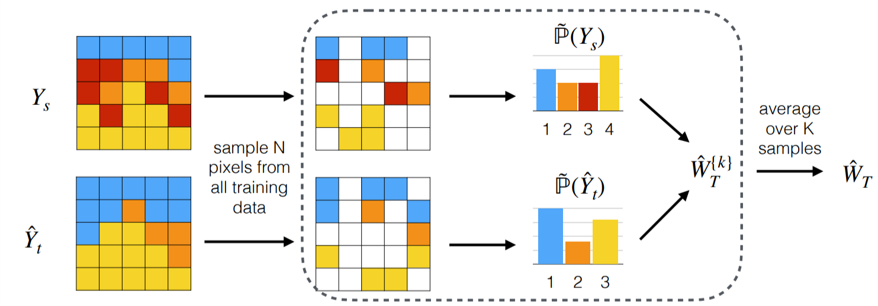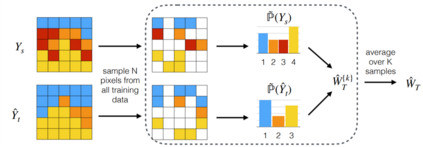Transferability estimation is a fundamental problem in transfer learning to predict how good the performance is when transferring a source model (or source task) to a target task. With the guidance of transferability score, we can efficiently select the highly transferable source models without performing the real transfer in practice. Recent analytical transferability metrics are mainly designed for image classification, and currently there is no specific investigation for the transferability estimation of semantic segmentation task, which is an essential problem in autonomous driving, medical image analysis, etc. Consequently, we further extend the recent analytical transferability metric OTCE (Optimal Transport based Conditional Entropy) score to the semantic segmentation task. The challenge in applying the OTCE score is the high dimensional segmentation output, which is difficult to find the optimal coupling between so many pixels under an acceptable computation cost. Thus we propose to randomly sample N pixels for computing OTCE score and take the expectation over K repetitions as the final transferability score. Experimental evaluation on Cityscapes, BDD100K and GTA5 datasets demonstrates that the OTCE score highly correlates with the transfer performance.
翻译:转让估计是转让学习以预测将源模型(或源任务)转让到目标任务时性能有多好的一个根本问题。根据可转让性评分的指导,我们可以有效选择高可转让源模式,而不必实际进行实际转让。最近的可转让性分析指标主要是为图像分类而设计的,目前没有具体调查静脉分解任务的可转让性估测,这是自主驾驶、医学图像分析等的一个基本问题。因此,我们进一步将最近分析可转让性指标OTCE(基于优化运输的 Contitional Entropy)的得分扩大到语义分割任务。应用OTCE评分的难题是高维分输出,这很难找到在可接受的计算成本下如此众多像素之间的最佳组合。因此,我们提议随机抽取计算 OTCE分数的N像素样本,并将对K重复的预期作为最后可转移性评分。城市景、BDD100K和GTA5数据集的实验性评估表明,OTCE的得分与转让性能高度相关。





